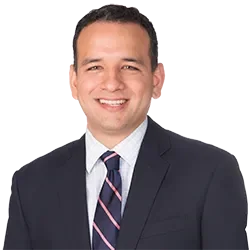ASAP
New York Enacts Statewide Sick Leave Law
On April 3, 2020, New York State Governor Andrew Cuomo signed a comprehensive budget bill that, among other things, amends the New York Labor Law1 to require all New York employers to provide paid or unpaid sick leave to their employees. The State of New York now joins other states and municipalities (including New York City and Westchester County) that have mandatory sick leave requirements in place. The New York State sick leave law was originally part of a bill that eventually became law on March 18, 2020, which requires employers to provide sick leave to employees who are subject to a mandatory or precautionary order of quarantine or isolation as a result of COVID-19. The New York State sick leave law was stripped from that bill.
The New York State sick leave law takes effect after 180 days after the budget was passed, i.e. September 30, 2020, but employees may not begin using any accrued sick leave until January 1, 2021. The following summarizes employers’ obligations under the new law.
Covered Employers
The amount of leave, and whether it is paid or unpaid, is determined by a private employer’s size and net income in a given calendar year.
Employer Type | Employee Leave Entitlement |
4 or fewer employees in any calendar year and a net income of less than $1 million in the previous tax year | At least 40 hours of unpaid sick leave in each calendar year |
4 or fewer employees in any calendar year and a net income of greater than $1 million in the previous tax year | At least 40 hours of paid sick leave in each calendar year |
Between 5 and 99 employees in any calendar year | At least 40 hours of paid sick leave in each calendar year |
100 or more employees in any calendar year | At least 56 hours of paid sick leave in each calendar year |
To determine an employer’s size under the law, a calendar year is defined as the 12-month period from January 1 to December 31. For the purpose of using and accruing paid or unpaid leave under the law, a calendar year means the 12-month period from January 1 through December 31, or a regular and consecutive 12-month period, as determined by an employer.
Accrual, Carryover, Use and Confidentiality
Employees may begin accruing sick leave on September 30, 2020, or when employment begins, whichever is later. Employees shall accrue sick leave at a rate of one hour for every 30 hours worked.
However, the law permits employers to front load the total amount sick leave at the beginning of the calendar year, provided that employers do not reduce the available amount of sick leave based on the number of hours actually worked by the employee.
Under the law, unused but accrued sick leave can be carried over to the following year. It is unclear if the state will clarify through regulations whether the carryover provision will apply to an employer choosing to front load sick leave at the beginning of the year. An employer with fewer than 100 employees may limit the use of sick leave to 40 hours per calendar year. An employer with 100 or more employees may limit the use of sick leave to 56 hours per calendar year. Employers may set a “reasonable” minimum increment for the use of sick leave, but that incremental use cannot exceed four hours.
While some employees may begin accruing sick leave as early as September 30, 2020, no employee may use sick leave before January 1, 2021. Notably, after January 1, 2021, the law permits employees to use sick leave immediately upon accrual, even if hired after January 1, 2021.
Employers cannot require employees who request to use sick leave to disclose any confidential information pertaining to the request.
Employees utilizing sick leave must be returned to the same position they held immediately prior to the use of sick leave with the same pay and other terms and conditions of employment.
Permitted Uses of Sick Leave
For purposes of the law, sick leave is defined broadly to include not only traditional sick leave usage, but also for reasons more commonly known as safe leave. Thus, sick leave may be taken for:
- An employee’s or employee’s family member’s mental or physical illness, injury, or health condition, regardless of whether such illness, injury, or health condition has been diagnosed or requires medical care at the time that the employee requests the sick leave;
- The employee’s or employee’s family member’s diagnosis, care, or treatment of a mental or physical illness, injury or health condition, or for preventive care; or
- An absence from work due to any of the following reasons when the employee or employee’s family member has been the victim of domestic violence, a family offense, sexual offense, stalking, or human trafficking:
- to obtain services from a domestic violence shelter, rape crisis center, or other services program;
- to participate in safety planning, to relocate temporarily or permanently, or to take other actions to increase the safety of the employee or employee’s family members;
- to meet with an attorney or other social services provider to obtain information and advice on, and prepare for or participate in, any criminal or civil proceeding;
- to file a complaint or domestic incident report with law enforcement;
- to meet with a district attorney’s office;
- to enroll children in a new school; or
- to take any other actions necessary to ensure the health or safety of the employee or the employee’s family member or to protect those who associate or work with the employee.
The law defines family member as an employee’s child, spouse, domestic partner, parent, sibling, grandchild or grandparent, and the child or parent of an employee’s spouse or domestic partner. Parent is defined as a biological, foster, step- or adoptive parent, or a legal guardian of an employee, or a person who stood in loco parentis when the employee was a minor child. Child is defined as biological, adopted or foster child, a legal ward, or a child of an employee standing in loco parentis.
Pay Rate Requirements
Paid sick leave must be paid at the regular rate the employee is paid for hours worked, which cannot be less than the state’s minimum wage. Employers are not required to pay any employees accrued but unused leave when employment ends.
Employee Documentation Requirements
Employers must track the amount of sick leave provided to employees. That information must be kept for at least six years, together with other information that an employer is obligated to keep and maintain as part of its payroll records.
An employee may request, verbally or in writing, a summary of the amount of sick leave they have accrued and used in the current calendar year or any previous calendar year. The law requires that an employer provide that information to a requesting employee within three business days.
Effect on Existing Policies and Agreements
Employers are not required to provide additional sick leave in accordance with the law if the employer previously implemented a sick leave or paid time off policy that: (a) provides employees with the amount of leave that meets or exceeds the amount of leave required by the law; and (b) satisfies the accrual, carryover, and use requirements of the law.
Employers are not required to provide additional sick leave benefits if they have entered into a collective bargaining agreement on or after September 30, 2020, that provides a comparable benefit for employees similar to the benefits provided under the law. Such comparable benefits must be in the form of leave, compensation, other employee benefits, or some combination of those, and the collective bargaining agreement must specifically acknowledge the requirements of the law. It is unclear whether the law intends to supplant sick leave benefits provided to employees pursuant to an existing collective bargaining agreement.
Interplay with Other Laws
Currently, there are only two jurisdictions in New York that have passed sick leave laws: New York City (via the New York City Earned Safe and Sick Time Act), and Westchester County (via the Westchester County Earned Sick Leave Law and Safe Time Leave Law).
Under the state’s law, existing paid sick leave benefits provided by a municipal corporation in effect as of September 30, 2020, will remain in effect. The law also specifically states that it shall not prevent a city with a population of one million or more from enacting and enforcing local laws or ordinances that meet or exceed the standard or requirements for minimum hour and use set forth in this law.
Prohibitions
Employers cannot discharge, threaten, penalize, or in any other manner discriminate or retaliate against any employee because that employee has exercised their sick leave rights under the law.
Next Steps
Employers are encouraged to consult with their counsel in advance of the law’s effective date (especially if those employers operate in New York City or Westchester County) regarding methods by which any existing sick leave policies may be modified to comport with the state law’s requirements. The New York Department of Labor is expected to issue additional regulations and guidance prior to the effective date of the law.

